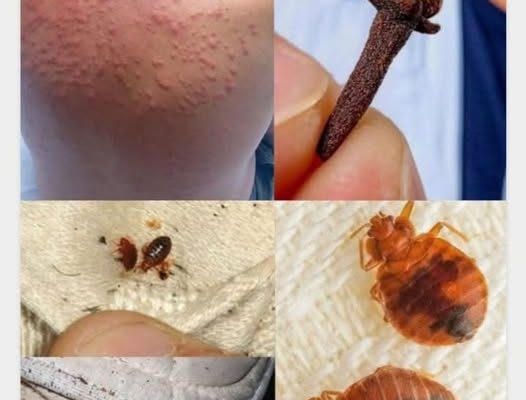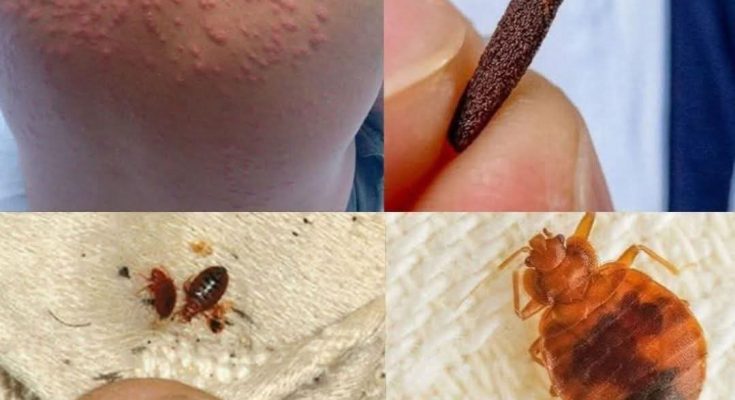Be Careful: If You Spot These Dots on Your Skin, It Could Mean Something Serious
Our skin is the largest organ of the body, acting as a protective barrier against external elements. However, it also serves as a warning system, often signaling underlying health conditions before they become severe. One such alarming sign can be unusual dots, spots, or discolorations appearing on your skin. While some may be harmless, others could be indicative of serious medical conditions, including skin cancer, autoimmune diseases, or infections. This article delves into what these skin changes could mean, when to seek medical advice, and how to protect yourself from potential health risks.
Understanding Skin Dots: What Are They?
Skin dots, often referred to as petechiae, purpura, or lesions, come in different colors, sizes, and patterns. They can appear suddenly or develop over time and may be symptomatic of various conditions ranging from benign to life-threatening.
- Petechiae – Small, red or purple pinpoint-sized dots caused by bleeding under the skin.
- Purpura – Larger patches of discolored skin resulting from blood leaking from vessels.
- Macules and Papules – Flat or raised skin lesions of different colors, often associated with rashes or infections.
- Moles or Nevi – Common dark or flesh-colored spots that are usually harmless but can sometimes develop into melanoma.
- Cherry Angiomas – Red, raised dots caused by clusters of blood vessels, generally benign.
Possible Causes of Skin Dots and Their Implications
1. Skin Cancer: A Silent Threat
One of the most critical conditions linked to unusual skin spots is melanoma, a type of skin cancer. While some moles and freckles are benign, a sudden change in their appearance should be a red flag. The ABCDE rule helps in early detection:
- A – Asymmetry: One half of the spot doesn’t match the other.
- B – Border: Irregular, scalloped, or poorly defined edges.
- C – Color: Multiple colors or uneven pigmentation.
- D – Diameter: Larger than 6mm (about the size of a pencil eraser).
- E – Evolving: Any change in size, shape, or color over time.
If you notice these signs, consult a dermatologist immediately. Early detection significantly increases the chances of successful treatment.
2. Autoimmune Disorders: When Your Body Attacks Itself
Autoimmune diseases can manifest through skin symptoms, including unexplained dots and discoloration.
- Lupus: A butterfly-shaped rash on the face or red spots on the body.
- Psoriasis: Red, scaly patches that may cause discomfort.
- Vasculitis: Inflamed blood vessels leading to red or purple dots, particularly on the legs.
- Scleroderma: Hardening and tightening of the skin, often accompanied by spots.
If you suspect an autoimmune disorder, seek medical advice to manage symptoms and prevent complications.
3. Infections That Affect the Skin
Many bacterial, viral, and fungal infections can cause skin dots and rashes.
- Meningitis: A dangerous bacterial infection that can cause a rash of small, red, or purple spots that do not fade under pressure.
- Measles and Chickenpox: Viral infections that cause widespread red spots and blisters.
- Fungal Infections: Ringworm and candidiasis can create circular red patches on the skin.
- Lyme Disease: A tick-borne illness that starts with a bullseye-shaped rash.
Infections often come with fever, fatigue, or other systemic symptoms, so prompt medical attention is essential.
4. Blood Disorders and Circulatory Issues
Skin changes can also indicate problems with blood clotting and circulation.
- Leukemia: Unexplained bruising, petechiae, or paleness could be early signs.
- Thrombocytopenia: A condition where the body has a low platelet count, leading to easy bruising and red dots.
- Peripheral Vascular Disease: Poor circulation can cause discoloration and ulcers.
If you experience frequent bruising, bleeding, or unexplained skin changes, a blood test might be necessary.
When to See a Doctor
While some skin dots are harmless, others warrant medical evaluation. Seek medical advice if:
- The spots appear suddenly and without explanation.
- They do not fade or disappear over time.
- They are accompanied by symptoms like fever, fatigue, pain, or swelling.
- They change in size, shape, or color.
- They appear alongside unexplained bruising or bleeding.
Preventative Measures and Skin Protection
Protecting your skin and overall health can minimize the risk of dangerous conditions.
- Wear Sunscreen: Prevent UV damage that can lead to skin cancer.
- Hydrate and Maintain a Healthy Diet: Good nutrition supports skin health.
- Avoid Harmful Chemicals: Some skincare products can trigger allergic reactions or irritation.
- Regular Skin Checks: Self-examinations help in early detection of changes.
- See a Dermatologist Annually: Routine skin checks can catch potential issues before they worsen.
Conclusion
Your skin reflects your overall health, and unusual dots or discoloration should never be ignored. While many are harmless, some may indicate serious conditions that require immediate medical attention. Understanding the potential causes and knowing when to seek help can make a significant difference in your well-being. Always prioritize skin health by taking preventative measures and consulting a healthcare professional when in doubt. Remember, early detection saves lives!




